 December 16, 2021 John E. Ross, KD8IDJ, Editor
| ||||||
. . The ARRL National Convention & Orlando HamCation® is February 10 - 13, 2022. Register at www.arrl.org/expo. The ARRL Letter will not publish on December 23, and ARRL Audio News will be on hiatus on December 24. ARRL Headquarters will be closed on December 24, and there will be no W1AW bulletin or CW practice transmissions on that day. ARRL Headquarters will reopen on Monday, December 27, at 8 AM EST (1300 UTC). We wish all a joyous Christmas holiday. SKYWARN Spotters and Nets Track Deadly Storms Amateur Radio activity related to the deadly spate of tornados on December 10 in Kentucky, Tennessee, Mississippi, Arkansas, Missouri, and Illinois was largely associated with the National Weather Service (NWS) SKYWARN groups across Arkansas followed the progress of the parent storm from the formation just northeast of Little Rock until it crossed the Mississippi River. According to Gary Gibbs, KE5HKW, SKYWARN Coordinator for Craighead County, Arkansas, Emergency Management, volunteers were very active in the Jonesboro area. This area includes Monette Arkansas, where the Monette Manor -- a long term care facility -- was destroyed. -- Thanks to J.M. Rowe N5XFW, ARRL Arkansas Section Emergency Coordinator Similarly, SKYWARN teams out of NWS Memphis were all over this and there was a whole lot of traffic that crossed multiple states. Memphis NWS uses a linked amateur radio digital network (DMR talkgroup) for their consolidated storm-spotting efforts and it appeared to work very well, considering the extreme situation. -- Thanks to Robert Hayes, KC5IMN, ARRL Mississippi Section Emergency Coordinator The Red Cross is reported to have set up portable cell phone towers in areas that don't have service because of damage to the telecommunications infrastructure. ARRL and RSGB Announce Winners of Transatlantic Centenary Cups ARRL and the Radio Society of Great Britain (RSGB) have announced winners of the 160-Meter Transatlantic Centenary QSO Party. The December 12 on-air event commemorated the 100th anniversary of
the successful Second Transatlantic Tests that contributed to the dawn of international amateur radio communication. Participating stations operating on CW attempted to contact the two official call signs: W1AW at the Hiram P. Maxim Memorial Station and GB2ZE, activated by a team of stations in Scotland. GB2ZE commemorates the call sign of Paul Godley, 2ZE, who was on the receiving end of the 1921 tests sent by ARRL to Scotland. The GMDX Group of Scotland announced that it would award a quaich -- a traditional Scottish drinking cup representing friendship -- to the first stations in North America and the UK, including the Crown Dependencies, to complete contacts with both W1AW and GB2ZE during the QSO Party. The cup winners are Rick Niswander, K7GM, and Bob Barden, MD0CCE. Logs from those taking part in the 6-hour event included 496 contacts, 261 from W1AW. Each participant that was recorded in the official W1AW and/or GB2ZE logs is eligible for a commemorative certificate designed by ARRL and RSGB. Participants do not have to submit their logs.
During the event, W1AW enjoyed a visit from Bruce Godley Littlefield, Paul Godley's grandson. Littlefield presented ARRL CEO David Minster, NA2AA, with a full-size., gallery-quality copy of the resolution awarded to his grandfather by ARRL, dated February 17, 1922. "The large certificate was given to Godley for his historic achievement of engineering and operating the receiving system that was installed in Ardrossan, Scotland, where the first amateur signals were successfully heard from North America," explained ARRL Director of Operations Bob Naumann, W5OV. "On the journey to Scotland, Godley was coincidentally on the same ship with a brilliant young engineer named Harold Beverage. Beverage and Godley spoke during the journey, and Godley incorporated the Beverage antenna in his receiving system to great success. The chance meeting is but one piece of this wonderful story and historic achievement." Read an expanded version. New Directors in Two ARRL Divisions will Take Their Seats in January New Directors in the ARRL New England and Roanoke Divisions elected in November will begin 3-year terms on January 1 and take their seats at the Board of Directors' January meeting a few weeks later.
In the New England Division, Fred Kemmerer, AB1OC, of Hollis, New Hampshire, was the top vote-getter in a three-way race. He received 1,147 votes to defeat incumbent Director Fred Hopengarten, K1VR, with 1,054 votes, and past Director Tom Frenaye, K1KI, who received 1,026 votes. Kemmerer has not previously held an ARRL leadership position. New England Division Vice Director Phil Temples, K9HI, was not opposed for re-election.
In the Roanoke Division, the winner of a three-way race was past Director Jim Boehner, N2ZZ, of Aiken, South Carolina, with 1,612 votes. He outpolled incumbent Director Bud Hippisley, W2RU, who picked up 809 votes, and a second challenger, Marvin Hoffman, WA4NC, who received 1,294 votes. Boehner was elected as ARRL Roanoke Division Vice Director in 2009, and he succeeded former ARRL Roanoke Division Director Dennis Bodson, W4PWF (SK), after he stepped down in 2015. No one challenged Roanoke Division Vice Director Bill Morine, N2COP, and he was elected for a new term. Incumbent Directors and Vice Directors in three other ARRL Divisions ran unopposed in the 2021 election cycle and were elected to new terms starting on January 1.
ARRL Podcasts Schedule
The latest edition of the Eclectic Tech podcast (Episode 49) The On the Air and Eclectic Tech podcasts are sponsored by Icom. Both podcasts are available on iTunes (iOS) and Stitcher (Android) as well as on Blubrry -- On the Air | Eclectic Tech. Past ARRL Chief Development Officer Mary Hobart, K1MMH, SK Retired ARRL Chief Development Officer Mary Hobart, K1MMH, of Ardmore, Pennsylvania, died on December 12. An ARRL member, she was 78. From the time she arrived at ARRL Headquarters, Mary served enthusiastically as ARRL's Chief Development Officer, developing Born in Washington, DC, she attended the National Cathedral School and Northwestern University in Chicago. After school, she moved to Philadelphia to raise her two sons as a single mother while working in non-profit development -- notably at the Philadelphia Zoo, WHYY, and NJN. She earned an MBA at LaSalle University in Philadelphia. She relocated to New England to work in development at Connecticut Public Television (CPTV) and then at ARRL. During her 13 years at ARRL Headquarters, she was behind the creation of The Diamond Club, The Diamond Terrace, The Maxim Society, and the Second Century Campaign, among other initiatives. She served as secretary of the ARRL Foundation, and promoter of the ARRL Spectrum Defense Fund. "During Hurricane Katrina, she virtually single-handedly created the Ham Aid Program that provides new gear to amateurs who have lost their equipment in disasters," then-ARRL Chief Operating Officer Harold Kramer, WJ1B, said in the August 2014 issue of QST. "Because of her efforts and those of her staff, she has raised millions of dollars for ARRL and, ultimately, for the benefit of Amateur Radio." She also was one of the founders of the successful Teachers Institute for Wireless Technology. Funded by voluntary contributions, the annual summer workshops help to better acquaint classroom teachers and educators with wireless technology and the science behind it. She retired from ARRL in 2014, moving back to the Philadelphia area to be closer to family. Read an expanded version. ARRL Rookie Roundup CW Event is December 19 If you're new to CW operating, the ARRL Rookie Roundup (CW), December 19, 1800 - 2359 UTC, is a chance to enhance your CW skills. The objective of the event is to encourage recent licensees to experience competitive amateur radio operating on HF.
Rookies will attempt to make as many contacts as possible during the 6-hour event. Rookies work everyone, and non-Rookies work only Rookies. Stations exchange call signs, first names, a two-digit year, and state/province (or DX, if appropriate). In the exchange, Rookies should send the last two digits of the year of your first contact. If you've never made any contest contacts using CW, or if you're a non-Rookie, send the last two digits of the current year in your exchange. -- Thanks to ARRL Contest Program Manager Paul Bourque, N1SFE Ham Radio University Going Virtual Again With COVID-19 uncertainties precluding an in-person gathering for a second year, the 23rd annual Ham Radio University (HRU) educational conference will be held as a virtual event again this year, on Saturday, January 8, 1300 - 2000 UTC, as an online GoToWebinar videoconference. Advance registration is required and begins on December 20. HRU 2022 will be adding five forums this year, for a total of 19 presentations by experts in a broad range of amateur radio activities, including Amateur Radio Emergency Communications. Other topics are:
Online attendees will be able to ask questions of the presenters. Founded by Phil Lewis, N2MUN (SK), HRU also serves as the online convention of the ARRL NYC-Long Island Section. As in past years, participation in HRU 2022 is free; an optional donation of $5 is suggested. Additional information is online, including the schedule of forums and advance registration starting December 20. ARRL Learning Network Webinars Visit the ARRL Learning Network (a members-only benefit) to register, check on upcoming webinars, and to view previously recorded Have an interesting topic you want to share? The ARRL Learning Network is a series of online webinars presented by member-volunteers for members. Presentations should be short -- 30 minutes plus an additional 15-minutes for Q&A. For more information, email ARRL Education and Learning. More webinars are coming soon! ARRL members may register for upcoming presentations and view previously recorded Learning Network webinars. ARRL-affiliated radio clubs may also use the recordings as presentations for club meetings, mentoring new and current hams, and discussing amateur radio topics. The ARRL Learning Network schedule is subject to change. Interim SM Appointment Made in Virginia; Georgia SM Post Becomes Vacant
The vacancy created by the recent death of ARRL Virginia Section Manager (SM) Joseph Palsa, K3WRY (SK), will be filled in the Virginia SM election scheduled to occur in January and February 2022. The winner of the SM election will assume office on April 1, 2022. Former Virginia SM Carl Clements, W4CAC, has been appointed by ARRL Field Services Manager Mike Walters, W8ZY to temporarily fill the position. Clements previously served as Virginia's SM from 2005 to 2006 and 2008 to 2015. Clements' appointment is effective December 15, 2021. Georgia ARRL SM Jim Millsap, K9APD, has resigned for personal reasons, effective December 14. He has served since October 1. The position stands vacant as the search for a replacement continues. Sweden's SAQ VLF Alexanderson Alternator Station Schedules Christmas Eve Transmission On December 24, SAQ in Grimeton, Sweden, is scheduled to transmit a Christmas message to the world, using the 97-year-old 200 kW Alexanderson alternator on 17.2 kHz CW. At 0730 UTC, a livestream will begin on YouTube.
Comments and reports are welcome. Amateur radio station SK6SAQ will be active on 3.535 MHz, 7.035 MHz, and 14.035 MHz CW, and on 3.755 MHz and 7.140 MHz SSB. Two stations will be on the air most of the time. Observations of Over-the-Horizon Radar Interference in Ham Bands Top All Others The volume of reports of over-the-horizon (OTH) radar interference from observers working with the International Amateur Radio Union (IARU) Region 1 Monitoring System (IARUMS) dwarfs that of all other interference sources, the November IARUMS newsletter reports. While the intruder watcher is focused on IARU Region 1, much of the major interference it recounts can affect the amateur bands in the world's other two IARU regions. IARUMS has tracked most OTH radar signals to sites in Russia and China, but a recent report indicated that India has an OTH radar system in the works. IARUMS is calling the system "of concern," although it's not known what frequencies it may use. During November 17 - 21, IARUMS reported a "strange, somewhat washed-out signal" on the order of 7 kHz wide, that "drifted slowly back and forth" in 40 meters and below. Read an expanded version. Announcements
Amateur Radio in the News ARRL Public Information Officers, Coordinators, and many other member-volunteers help keep amateur radio and ARRL in the news.
Share any amateur radio media hits you spot with us. Spain, Norway Seek Ways to Attract a Younger Generation of Hams Spain's national amateur radio society, Union of Spanish Radio Amateurs (URE), is attempting to entice youth and youngsters to become interested in amateur radio. URE is offering free membership in the organization and a free amateur radio license manual. The URE's pitch to the next generation of radio amateurs is that ham radio opens "a universe of technology and operational challenges" that includes advanced digital modes, satellite and microwave communication, contesting, and experimentation, as well as "great opportunities to learn and make friends." Prospective young radio amateurs must be between 14 and 18 years old to qualify for a free URE membership and a license manual to prepare for the exam and obtain an operator license. URE says the manual explains the basics of electricity, electronics, and telecommunications, as well as the regulatory structure. Those aged under 25 can qualify for a half-price membership once they've obtained their radio amateur license and become full URE members. Meanwhile, Norway is looking to introduce a new 10 W entry-level license that will enable 12- and 13-year-olds to get started building simple transmitters and receivers. The Research Council of Norway Norway's national amateur radio organization, NRRL, said the program wants to leverage young peoples' "digital competence and understanding of digital technology." NRRL and the Norwegian Defence Research Establishment (FFI) are partnering in the project, headed by Torbjørn Skauli, LA4ZCA. The project aims to increase interest in technology and science in schools. The idea is to introduce amateur radio as a high school elective, as well as develop an entry-level certificate allowing 12- and 13-year-olds to get started with amateur radio. The Norwegian Communications Authority (NKOM) has already laid out the requirements and conditions of the entry-level license. Skauli, a professor at FFI, has previous experience with computer coding workshops in schools. The proposal for an entry-level certificate has received broad support in education and public administration in Norway, according to the SSA (Sweden's national amateur radio organization), which says it's looking forward to cooperating with NRRL in this area. In Brief...
The EI7GL blog reports that publication of the World Radio TV Handbook (WRTH) will cease with the current 76th edition. For many years, the WRTH provided information about shortwave broadcast times and frequencies, but the number of listeners has dwindled as broadcasting has shifted to the internet. In addition, information on international broadcasting schedules and frequencies is also available on the internet. In a statement, the publishers said, "Having produced this book for the past 24 years, we are very sorry to announce that WRTH 2022 will be the final edition of World Radio TV Handbook produced and published by WRTH Publications. We realize that this news will be disappointing for many people. We wish to thank you all for your loyal support over the years. Good DX and Happy Listening."
The K7RA Solar Update Tad Cook, K7RA, Seattle, reports: Sunspots disappeared over 4 days, December 8 - 11. Average daily sunspot numbers and solar flux hardly changed, with sunspots at 24.4 during the December 9 - 15 reporting week, as compared to 24.6 the previous week. Average daily solar flux shifted from 82.6 to 82.9, rising to 102.5 by Wednesday. Geomagnetic activity was quiet. Average daily planetary A index changed from 7.6 to 5, and average daily middle latitude A index from 5.3 to 3.9. One new sunspot group emerged on December 12, two the following day, and two more on December 15. Predicted solar flux over the next month looks good for this week, at 102 on December 16 - 18; 100 on December 19 - 21; 98 on Predicted planetary A index is 8 on December 16 - 17; 5 on December 18 - 19; 8, 16, 12, and 8 on December 20 - 23; 5 on December 24 - 26; then 15, 18, and 12 on December 27 - 29; 8 on December 30 - January 1; 5 on January 2 - 8; 8 and 5 on January 9 - 10; 12, 10, 10, and 8 on January 11 - 14, and 5 on January 15 - 22. Sunspot numbers for December 9 - 15 were 0, 0, 0, 12, 40, 40, and 79, with a mean of 24.4. The 10.7-centimeter flux was 76.7, 75.7, 76.2, 79.9, 80.6, 88.9, and 102.5, with a mean of 82.9. Estimated planetary A indices were 3, 4, 5, 3, 6, 5, and 9, with a mean of 5. Middle latitude A index was 2, 2, 3, 2, 6, 4, and 8, with a mean of 3.9. A comprehensive K7RA Solar Update is posted Fridays on the ARRL website. For more information concerning radio propagation, visit the ARRL Technical Information Service, read "What the Numbers Mean...," and check out the Propagation Page of Carl Luetzelschwab, K9LA. A propagation bulletin archive is available. For customizable propagation charts, visit the VOACAP Online for Ham Radio website. Share your reports and observations. Just Ahead in Radiosport
Upcoming Section, State, and Division Conventions
Search the ARRL Hamfest and Convention Database to find events in your area. ARRL -- Your One-Stop Resource for
Subscribe to...
Free of charge to ARRL members...
| ||||||
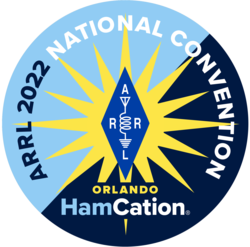
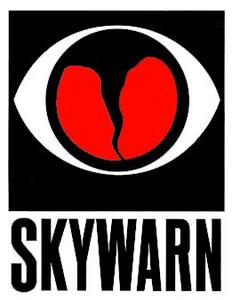 SKYWARN program. Weather spotters, most of whom are radio amateurs, followed the progress of the storms, sharing that information with NWS offices and related partners.
SKYWARN program. Weather spotters, most of whom are radio amateurs, followed the progress of the storms, sharing that information with NWS offices and related partners.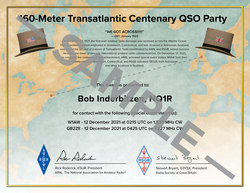
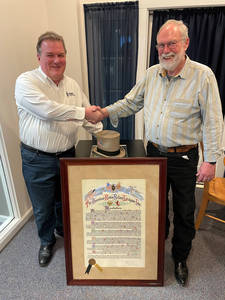
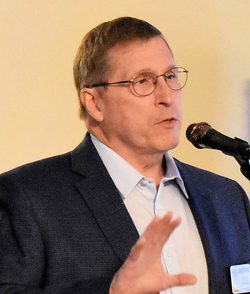
.jpg)
.jpg) The latest episode of the On the Air podcast (Episode 24) features some tips about how to improve the effective range of your handheld transceiver.
The latest episode of the On the Air podcast (Episode 24) features some tips about how to improve the effective range of your handheld transceiver..jpg) features a chat
features a chat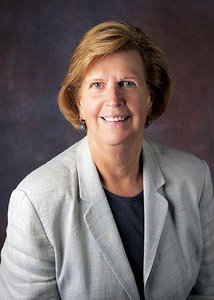 relationships that helped to grow the ARRL Endowment. One individual she invited into the ARRL fold of regular supporters was Joe Walsh, WB6ACU, of the Eagles.
relationships that helped to grow the ARRL Endowment. One individual she invited into the ARRL fold of regular supporters was Joe Walsh, WB6ACU, of the Eagles.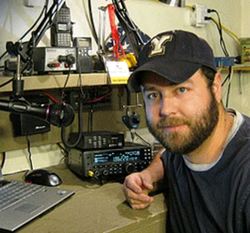 A Rookie is anyone who was first licensed in the current calendar year or in the previous 3 calendar years (2021, 2020, 2019, or 2018), regardless of license class. If you were licensed earlier, you can still qualify as a Rookie if you haven't made any contest contacts on CW before this Rookie Roundup.
A Rookie is anyone who was first licensed in the current calendar year or in the previous 3 calendar years (2021, 2020, 2019, or 2018), regardless of license class. If you were licensed earlier, you can still qualify as a Rookie if you haven't made any contest contacts on CW before this Rookie Roundup. Basics of HF Operating
Basics of HF Operating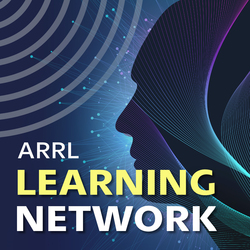 sessions.
sessions..jpg)
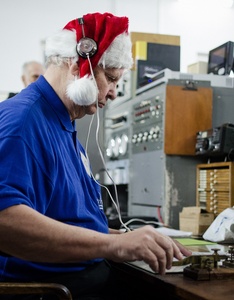 Start-up and tuning of the Alexanderson alternator will begin at 0800 UTC.
Start-up and tuning of the Alexanderson alternator will begin at 0800 UTC..png) Nearly 800 OTH radars were observed during November alone, and the total number of reports for the year is more than 4,500 -- although that number likely includes multiple reports of the same OTH radar systems.
Nearly 800 OTH radars were observed during November alone, and the total number of reports for the year is more than 4,500 -- although that number likely includes multiple reports of the same OTH radar systems.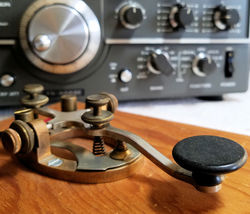 On New Year's Eve and New Year's Day, break out your straight key or bug to join in the fun of ARRL Straight Key Night (
On New Year's Eve and New Year's Day, break out your straight key or bug to join in the fun of ARRL Straight Key Night (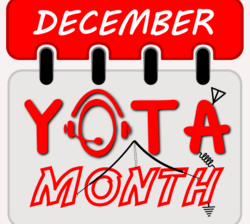 canceled due to the pandemic.
canceled due to the pandemic. 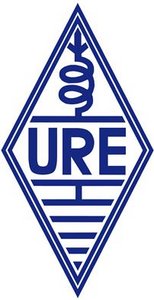 organization has framed amateur radio as "the technological and experimental hobby that will hook you forever."
organization has framed amateur radio as "the technological and experimental hobby that will hook you forever." has granted 1 million kroner (approximately $114,600) to support the Radio Communications Technology for Young People project, aimed at recruiting young radio amateurs.
has granted 1 million kroner (approximately $114,600) to support the Radio Communications Technology for Young People project, aimed at recruiting young radio amateurs..jpg) Experimental station WI2XLQ will be on the air on 486 kHz AM for the Reginald Fessenden commemorative transmission. Brian Justin, WA1ZMS, is the licensee. He will transmit for 24 hours starting at 2000 UTC on December 24, with a repeat transmission starting at 2000 UTC on December 31. Justin will use a homebrew 1921-era MOPA exciter with Heising modulation, followed by a modern 500 W linear amplifier. The transmission will be the same as in past years -- two violin pieces that Fessenden claims to have played as one of the very first voice transmissions from his Brant Rock, Massachusetts, radio lab site. "While doubt remains that such a transmission ever took place, Fessenden did perform some crude voice transmissions over a few miles distance in early December near Washington, DC, as a demonstration for the US Navy," Justin said. "So, perhaps some credit is due to Fessenden for his efforts to transmit the human voice in an era of spark transmissions."
Experimental station WI2XLQ will be on the air on 486 kHz AM for the Reginald Fessenden commemorative transmission. Brian Justin, WA1ZMS, is the licensee. He will transmit for 24 hours starting at 2000 UTC on December 24, with a repeat transmission starting at 2000 UTC on December 31. Justin will use a homebrew 1921-era MOPA exciter with Heising modulation, followed by a modern 500 W linear amplifier. The transmission will be the same as in past years -- two violin pieces that Fessenden claims to have played as one of the very first voice transmissions from his Brant Rock, Massachusetts, radio lab site. "While doubt remains that such a transmission ever took place, Fessenden did perform some crude voice transmissions over a few miles distance in early December near Washington, DC, as a demonstration for the US Navy," Justin said. "So, perhaps some credit is due to Fessenden for his efforts to transmit the human voice in an era of spark transmissions."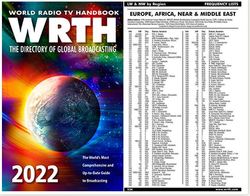
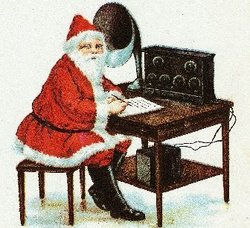 OF9X, OF2YOTA, and OI3AX are now on the air from the "Land of Santa Claus." Completing its centennial year, the Finnish Amateur Radio League (SRAL) will once again launch Santa (OF9X) and his elves (OF2YOTA) to greet the world on HF, CW, SSB, and FT8. These stations will greet operators with "59(9) SRAL." Working stations should reply with "59(9) MX" -- Merry Christmas. The OF9X operation is organized by the Radio Club of Pusula, OH9W, and supported by Radio Arcala, OH8X, while OF2YOTA is organized by the SRAL Youngsters on the Air team and supported by Radio Team Mustila, OH5Z. Contacts with OF9X, OF2YOTA, and OI3AX will count toward the SRAL Jubilee Award. QSL OF9X via OH2BH; OF2YOTA via OH5CZ, and OI3AX via OH2LGW. Additional award information is on the OF9X
OF9X, OF2YOTA, and OI3AX are now on the air from the "Land of Santa Claus." Completing its centennial year, the Finnish Amateur Radio League (SRAL) will once again launch Santa (OF9X) and his elves (OF2YOTA) to greet the world on HF, CW, SSB, and FT8. These stations will greet operators with "59(9) SRAL." Working stations should reply with "59(9) MX" -- Merry Christmas. The OF9X operation is organized by the Radio Club of Pusula, OH9W, and supported by Radio Arcala, OH8X, while OF2YOTA is organized by the SRAL Youngsters on the Air team and supported by Radio Team Mustila, OH5Z. Contacts with OF9X, OF2YOTA, and OI3AX will count toward the SRAL Jubilee Award. QSL OF9X via OH2BH; OF2YOTA via OH5CZ, and OI3AX via OH2LGW. Additional award information is on the OF9X 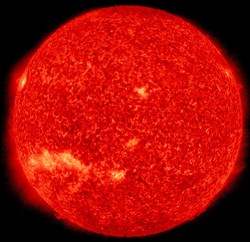 December 22 - 23; 82 on December 24 - 27; 80 on December 28; 78 on December 29 - through January 3; then 80 on January 4 - 10; 82 on January 11, and 84 on January 12 - 17. Flux values drop below 80 after January 24.
December 22 - 23; 82 on December 24 - 27; 80 on December 28; 78 on December 29 - through January 3; then 80 on January 4 - 10; 82 on January 11, and 84 on January 12 - 17. Flux values drop below 80 after January 24.







